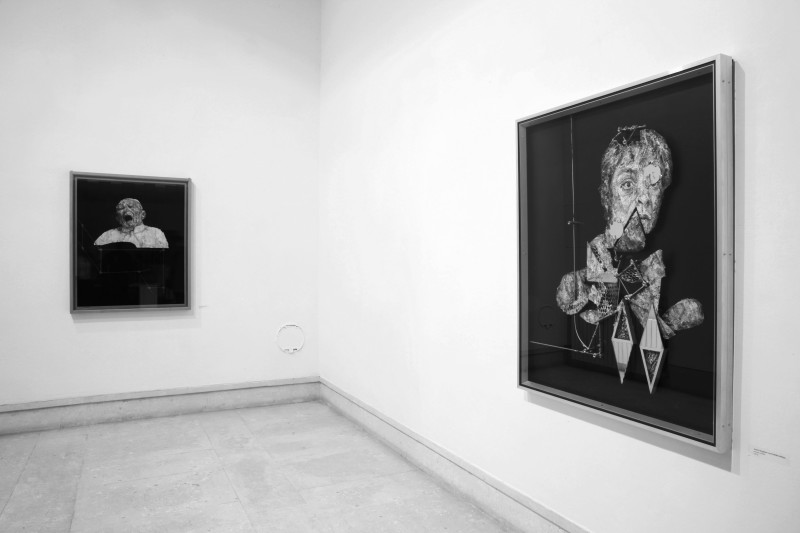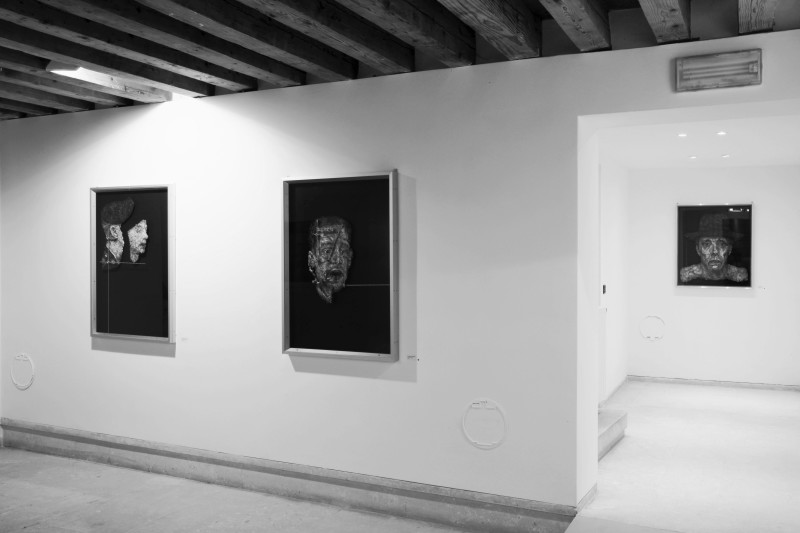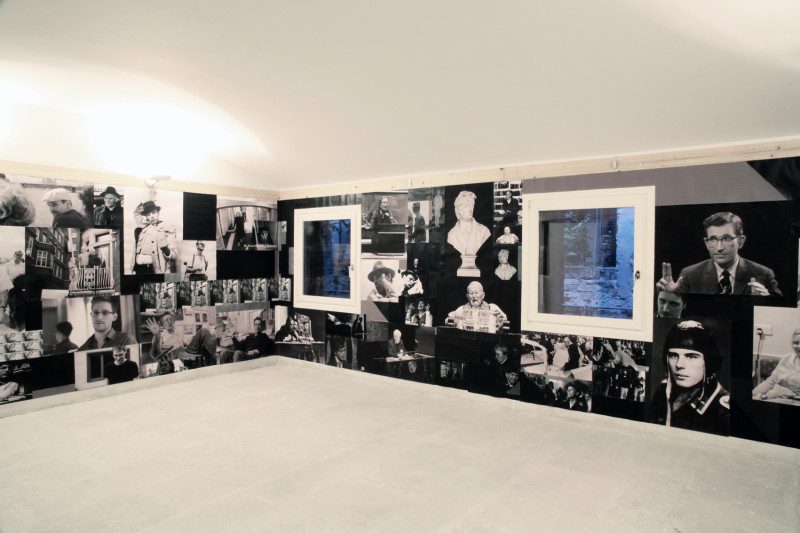21.2—26.4 15
21.2—26.4 15
History, politics and power – economic power but also the power of images – are focal points in Aleksander Velišček artworks. Velišček who lives and works between Venice and Nova Gorizia can be linked theoretically to the writings of Slavoj Žižek, who claims that there is a close relationship between politics and painting.
Velišček is a painter who deals with strong themes and who grew up in times of intense political change as well as of changes in economic and mediatory power of imagery. The artist, who lives in Nova Gorica – the border city between Italy and Slovenia and until the nineties the symbol of the division between the east and west – has first-hand experience from sociological, economic and ideological transformations of the then Yugoslavia and of the emerging Slovenia. Ever since he was a student at the Academy of Fine Arts of Venice and an artist of The Bevilacqua La Masa Foundation, his artistic research has been focused on human figure, on the physicality of the body, on its gestures and proportions.
Recently the artist is working on portraits of Joseph Beuys, Julian Assange, Chelsea Manning, Edward Snowden, Anna Stepanova Politkovskaja, Pope John Paul II, Stanley Kubrick and Walter Benjamin. In a very complex and accurate process the stratification of the oil colour transforms the painting almost into a sculpture. Velišček’s painting technique leaves a consistency of the human flesh to appear frozen. These portraits seem to be suspended between the black background and the frame covered by glass. The artist made frames are constructed with wood, metal and glass and fulfil more than the task of display cases. In some cases these massive frames are even double glass-fronted and the painting appears to be a sculpture or an installation behind bulletproof glass. The depth of this frame, that contains metallic structures inside, works like an orthopaedic prosthesis that sustains the frozen flesh of the human figure.
The human figure in Velišček’s works appears suspended between the black background and the transparency of the glass above. The frames, made by the artist using wood and metal, can weigh more than 20 kg in some cases: thanks to the inclusion of a double glass that reminds of bulletproof protection the painting takes the complexity of an installation. The human figure is imprisoned inside its frame in such a way that the message of the philosopher, theologian, scientist, writer, artist, informer, whistleblower or journalist, although partly intuited, can not be fully received by the viewer. The frames, many of which are very deep, serve as a container made of a series of metal joints, natural elements (honeycombs of beehives), magnifying lens (such as the one placed on the lips of Edward Snowden) that melt into a single entity with the painting itself, accentuating realistic effect and suggesting metaphorical references. For example, the metal geometries in the painting depicting young Italian essayist and philosopher Diego Fusaro closely resemble the geometries of robotics.
Similarly, the metal structure that supports the portrait of John Paul II, gives a sense of precariousness to the sickly and fragile figure of the Pope; the material structure of the painting itself and the form of the support (which opens into a chasm close to the mouth) do nothing but accentuate the drama and authenticity of such representation. This applies also to the linguist and philosopher Noam Chomsky, whose skull seems to open in front of the viewer, and to Edward Bradley Manning, the informer of WikiLeaks scandal, represented with a face detached from head and body, which refers to the change of gender identity that the American soldier undertook in jail after having stolen tens of thousands of confidential documents including the famous video Collateral Murder. Finally, the melancholy on the face of Joseph Beuys is disarming.
Previously the artist created portraits of Alain Badiou, Pier Paolo Pasolini, Garri Kasparov and Mario Monicelli in a series of small tondo paintings, frameless and then yet without metal structures, similar to heads severed by a guillotine, with dried bits of color on the edges. These characters have a common point – an extreme dedication to a political, social or philosophical ideal (and, as in the case of Putin and Berlusconi, the dedication that is the quest for sheer power itself). For better or for worse, Velišček painted the outer limits of human passions and ideas. These paintings evoke an individual destiny, a political struggle, a violent death, a won or lost case, a life dedicated to an idea.
The artist called this series of portraits gullivers. In Nadsat language gulliver means head. This word invented by the writer Anthony Burgess is used by the characters from the novel A Clockwork Orange (1962) and by the protagonist Alex de Large in cinematic adaptation by Stanley Kubrick (1971). Burgess conceived an artificial language by merging English and Russian terms thus creating a language inspired by the two politically most influential languages of his time. Phonetically the Russian word head (golová) is pronounced in Nadsat language as gulliver. The choice of a hard-sounding language that is often difficult to understand aims to the analysis of violence in the socio-political context. Like Nadsat language, the artistic language of the Slovenian artist Aleksander Velišček is also the result of a socio-political research.
The exhibition is produced with the support of pixartprinting
Press Release
 groundfloor
groundfloor  groundfloor
groundfloor  groundfloor
groundfloor  1st floor
1st floor  1st floor
1st floor  1st floor
1st floor